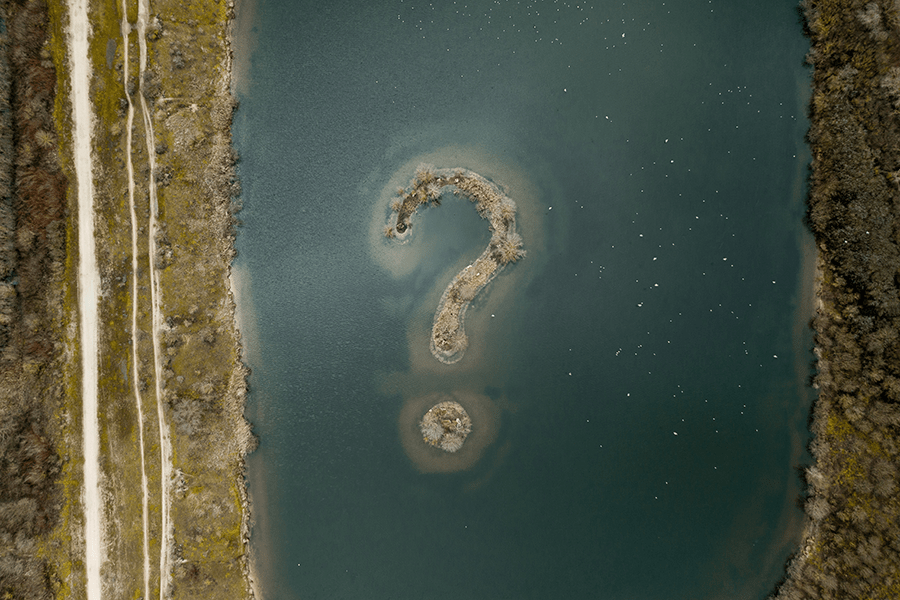
Magnet fishing is a craze that is slowly but steadily gaining popularity all around the world. People are finding all sorts of treasures from bicycles to unexploded hand grenades. But what is this crazy new hobby?
Magnet fishing is the practice of suspending a high powered magnet from a chord. This tethered magnet is then thrown into a body of water and dragged or bounced along the bottom. As a result, anything magnetic will become attached to the magnet, allowing the operator to bring it to the surface. Here is everything you need to know to get started on your adventure.
How to Magnet Fish
Magnet fishing is fairly straightforward and easy to understand and learn. You first must find a waterway to start your search. Typically, the more visited this water is by people, the better (at least in quantity) your finds will be.
Once you have arrived at the water, you can fish a couple of different ways. One way is to drop the magnet almost straight down and bounce it off the bottom, moving laterally as you do this. This is a good tactic to use around docks and prominent fishing spots.
Another way is to throw your magnet out into the water a good distance, allow it to sink to the bottom, and then slowly pull it toward you, making sure it stays on the sediment. This way can get tricky as there are many items underwater that your magnet or rope can get stuck on as you retrieve it.
Be sure and tie off the back end of your rope so it does not fly into the water with the rest of your equipment. Now that we know how, what do we need to get started?
Tools of the Trade

To get started you will need a few things. Fortunately most if not all of these items are fairly inexpensive allowing people to get into the hobby pretty easily. There are even kits available that will have most of the following items in them.
- Magnet – This is pretty obvious but also perhaps the most confusing piece of equipment you will need.
- Rope/Chord – Many different options available.
- Carabiner or Knot Tying Ability – maybe both
- Puncture resistant gloves – pretty important
- A bucket – To store your magnet in and to transport your finds back
- Permission – don’t want to get in trouble
- Safety considerations – don’t want to get hurt
Magnet
Obviously one of the most important pieces of equipment needed to “Magnet” fish is the magnet. There are so many different types of magnets available, so which ones should you use? We are not talking about your ordinary refrigerator magnet here. Most of us in the hobby use a Neodymium magnet.
Neodymium magnets are some of the most powerful magnets in the world. When selecting a magnet you will see “Pull Force” followed by a number or sometimes the other way around. This number represents the amount of force it would take to separate that magnet from a flat piece of steel.
There are many assumptions made in this number when the magnet was tested. For example, the test assumes no air is trapped in between the steel and the magnet, an assumption that is not always true. Any of the magnets in the kits will work just fine.
Another misunderstanding when looking at this pull force number is that the pull force number is how strong I have to be to remove an object from the magnet. Again, this number tells us the force required if the entire magnet was flat on a piece of steel. Most items retrieved from underwater will not equate to this model. Additionally most items have been underwater for some time and will have other elements on them.
One final note on magnet strength. One should be mindful of surroundings as there might be rebar in concrete barriers, watch out for steel signs or poles, and metal railways etc. A magnet can get stuck to these items requiring significant force to remove. Stay mindful.
The magnet will also need some way to attach it to the rope, either a hole in the middle or an eyelet. Again, most if not all, of the magnet fishing kit’s magnets will have this feature.
Some magnets will be one sided and some two sided. The one sided is better for bouncing off the sediment, whereas the two sided is more suited for dragging across the bottom. However, either one will work for either situation.
Make sure you keep these magnets away from electronics that use a magnetic drive such as computers.
Rope/Chord
Another vital piece of equipment is the rope/chord. There are many different options available to purchase or in kits. One of the most popular is Paracord.
Paracord is known for its versatility and it is a great choice for magnet fishing. It is very strong for its size and resist rot, mold, and UV light. It also has an elastic property to it which helps with your line not breaking, but should also be remembered when tying knots.
There are 2 main types of paracord. The cheaper of the two is made out of polyester. It does not hold the same elastic properties as its counterpart and can break easier. The true paracord is made of Nylon and would be the more desirable choice if it was an option.
Another good choice would be to use a polypropylene or nylon braided rope. These are both fairly inexpensive options and both have some advantages. Polypropylene resists rot and it also floats, which can be a life saver if you forget or your back end comes untied on a toss. You can easily see your rope and retrieve it and not loose your magnet. These ropes are commonly used on small boats and as life lines.
Nylon rope is one of the strongest type ropes available. It is more expensive but is more elastic than the polypropylene ones. These ropes are commonly used on ships as tow lines and as a universal rope for almost any rigging. They do tend to become stiff in cold conditions making them difficult to handle. They also do not float.
Carabiner/Knot Tying
There are two ways to attach your magnet to your rope of choice. The first and easiest way is by use of a carabiner. Simply click the magnet to your carabiner and you are set. However, this ease of use comes with some drawbacks.
First of all it does not eliminate the need to know how to tie a strong knot. It does nix one knot but you still have to attach the carabiner to the rope via a knot.
Second, this clunky piece of equipment increases your chances of getting snagged on something underneath the surface of the water. There are ways around this such as using some good quality tape and wrapping it up like a mummy, but this seems to counter act the thought process in using it in the first place.
If you are not using a carabiner, and even if you are, you will need to learn to tie some really strong knots. You may snag something pretty heavy underwater and it would be a shame to loose your magnet because your knot broke or came untied.
There are several different knots that will work for your set up. Figure 8 follow through is a favorite among magnet fishers. Here is a video on how to tie it.
Another knot that is simple to learn and is touted as one of the best fishing knots as well (for live fish) is the Palmor Knot. Check out this video to learn how to use this versatile knot.
Knots are very important to help ensure you don’t loose your magnet. DO NOT follow the old adage of “He who can’t tie a knot, ties a lot” as this will certainly result in heartache.
Gloves
A lot of the videos you can find on the internet of people magnet fishing depict operators who are not wearing gloves. Gloves are very useful when magnet fishing and I would recommend using a good pair of puncture resistant ones.
Some of the things you will be pulling up from the sediment will have been submerged for quite a long time. This sometimes results in slimy gunk buildup on the item. Gloves help mitigate the touching of this nasty stuff.
Another consideration is that you will find a lot of sharp objects. Broken pieces of metal, old coke cans, and a lot of fishing gear. In fact, this is a good way to build up your tackle box! As we all know, most lures have hooks, some have several hooks on them. You will have to get those sharp objects off your magnet by sliding them off the side. It would be a downer to cut your adventure short because you had to go get a tetanus shot!
Permission
If hunting a local pond or creek, always get permission from the land owner before you begin. If you are hunting public areas, make sure that you are allowed to magnet fish on that particular waterway. It is legal in most places, but some places have outlawed this practice (South Carolina state owned water for example). Some historical sites and national parks may be off limits as well. Parks and Wildlife departments are great places to start asking about legality.
Saftey
Magnet fishing is not particularly dangerous but does pose some hazards. Check out our other post here to read more.
Have fun and stay safe!
*for more info on magnet strength visit here: https://www.magnetsource.com/pages/measuring-pull-strength
*featured image Photo by Jules Bss on Unsplash
*tools Photo by Lachlan Donald on Unsplash
